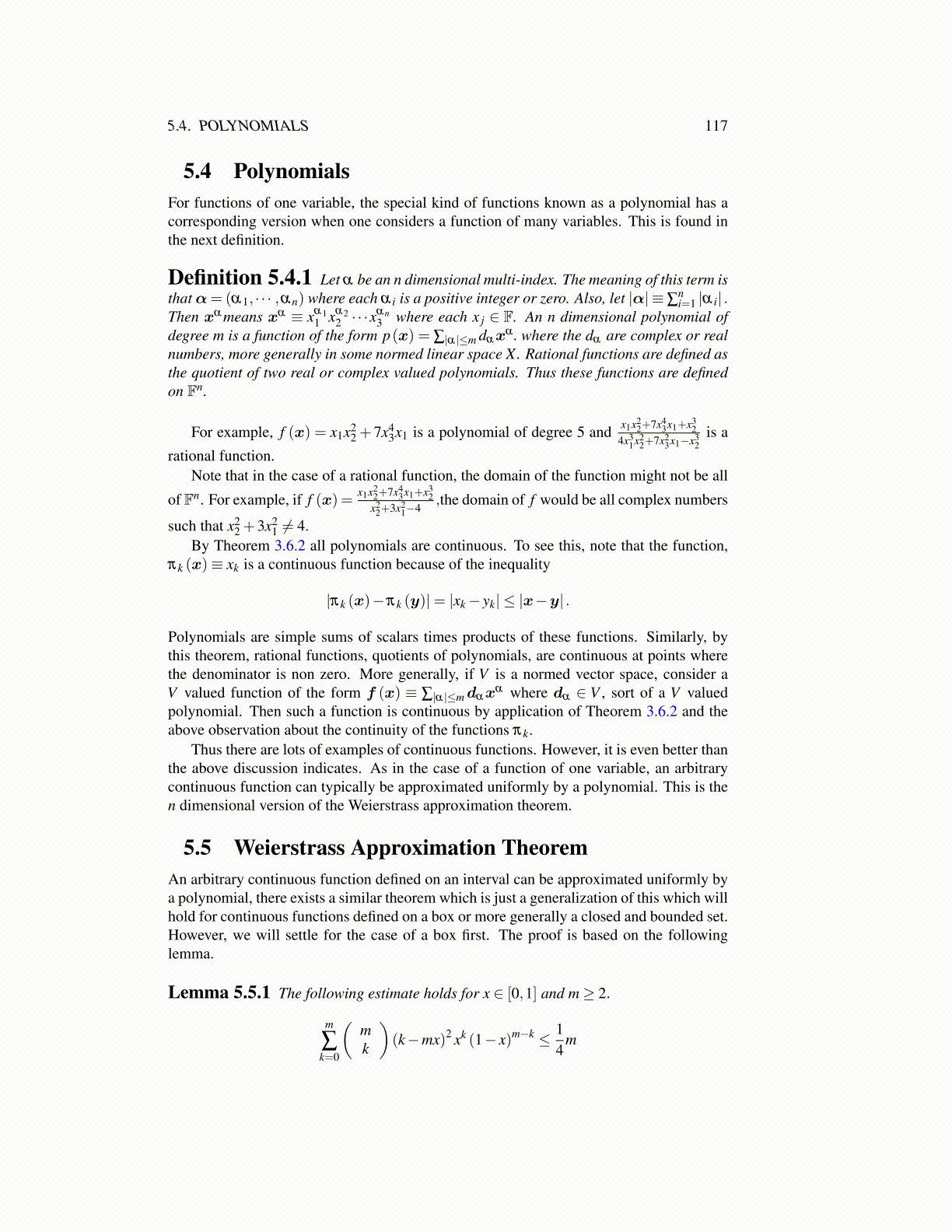
5.4. POLYNOMIALS 117
5.4 PolynomialsFor functions of one variable, the special kind of functions known as a polynomial has acorresponding version when one considers a function of many variables. This is found inthe next definition.
Definition 5.4.1 Let α be an n dimensional multi-index. The meaning of this term isthat α= (α1, · · · ,αn) where each α i is a positive integer or zero. Also, let |α| ≡∑
ni=1 |α i| .
Then xα means xα ≡ xα11 xα2
2 · · ·xαn3 where each x j ∈ F. An n dimensional polynomial of
degree m is a function of the form p(x) = ∑|α|≤m dαxα. where the dα are complex or real
numbers, more generally in some normed linear space X. Rational functions are defined asthe quotient of two real or complex valued polynomials. Thus these functions are definedon Fn.
For example, f (x) = x1x22 + 7x4
3x1 is a polynomial of degree 5 and x1x22+7x4
3x1+x32
4x31x2
2+7x23x1−x3
2is a
rational function.Note that in the case of a rational function, the domain of the function might not be all
of Fn. For example, if f (x) = x1x22+7x4
3x1+x32
x22+3x2
1−4,the domain of f would be all complex numbers
such that x22 +3x2
1 ̸= 4.By Theorem 3.6.2 all polynomials are continuous. To see this, note that the function,
πk (x)≡ xk is a continuous function because of the inequality
|πk (x)−πk (y)|= |xk− yk| ≤ |x−y| .
Polynomials are simple sums of scalars times products of these functions. Similarly, bythis theorem, rational functions, quotients of polynomials, are continuous at points wherethe denominator is non zero. More generally, if V is a normed vector space, consider aV valued function of the form f (x) ≡ ∑|α|≤mdαx
α where dα ∈ V , sort of a V valuedpolynomial. Then such a function is continuous by application of Theorem 3.6.2 and theabove observation about the continuity of the functions πk.
Thus there are lots of examples of continuous functions. However, it is even better thanthe above discussion indicates. As in the case of a function of one variable, an arbitrarycontinuous function can typically be approximated uniformly by a polynomial. This is then dimensional version of the Weierstrass approximation theorem.
5.5 Weierstrass Approximation TheoremAn arbitrary continuous function defined on an interval can be approximated uniformly bya polynomial, there exists a similar theorem which is just a generalization of this which willhold for continuous functions defined on a box or more generally a closed and bounded set.However, we will settle for the case of a box first. The proof is based on the followinglemma.
Lemma 5.5.1 The following estimate holds for x ∈ [0,1] and m≥ 2.
m
∑k=0
(mk
)(k−mx)2 xk (1− x)m−k ≤ 1
4m